In this interview, South African auteur Oliver Hermanus discusses his 1981-set film, Moffie, about how the army indoctrinated conscripted boys with white supremacy and homophobia. Moffie is now available on VOD in Canada, the US, and the UK.
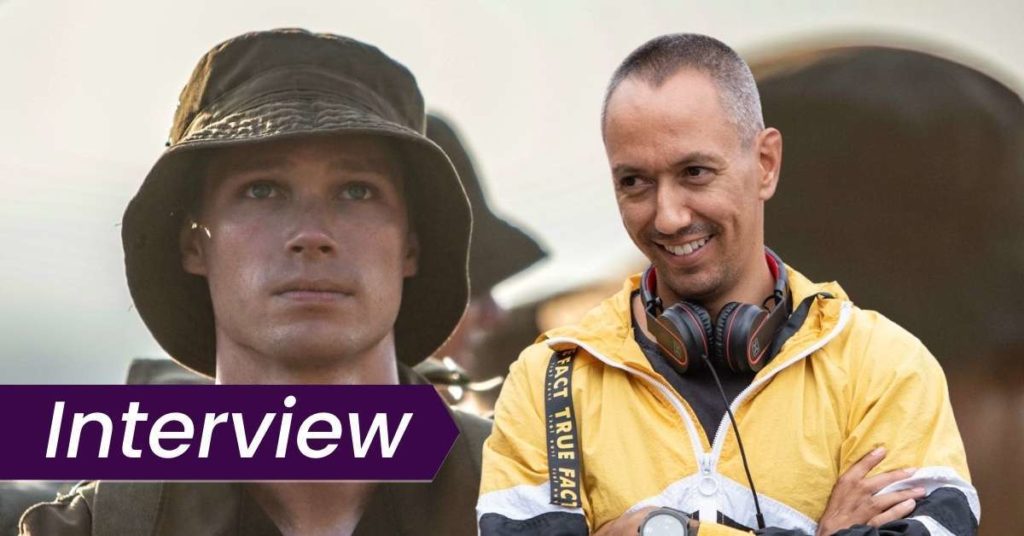
South Africa, 1981. At seventeen, all white boys are conscripted into the army for two years. They are forced to fight in the Border War, a white supremacist campaign from a white supremacist institution. Perhaps even more important to the government than getting foot soldiers for the battles is indoctrinating an entire generation to uphold Apartheid. Here, young men learn that their goal is to dominate, to hold power over others. It starts with white supremacy. But as Oliver Hermanus’s Moffie dissects, it’s a short hop and a skip to other forms of oppression, like homophobia.
Nicholas (Kai Luke Brummer) is our entry point into this world. We meet him on the last night before he’s about to be shipped off to do his military service. His mother and her paramour act as though it’s a rite of passage. But the quiet, introspective — and as we soon learn, gay — Nicholas isn’t quite so excited.
Initiation into the army begins before training
The initiation process starts on the train to the training facility. The boys preemptively get drunk and take out their aggression on any target they can. One such target is an elderly Black man (Israel Ngqawuza), sitting on the platform at a station they pass. He doesn’t stand up in deference to the train’s white passengers. It’s a harrowing scene. Groupthink kicks in and the boys shout insults and lob a bag of vomit at the man. It’s also a succinct illustration of how much the white population relies on oppressing others.
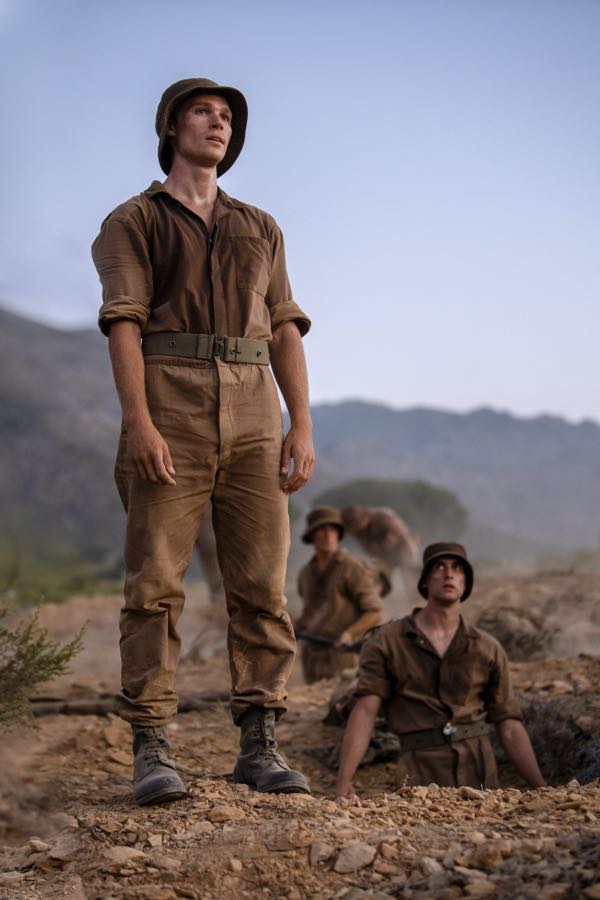
Basic training as battleground
Before the boys even approach the front lines, their training is a battleground. Hermanus shoots it with unblinking frankness, alternating between keeping us close to Nicholas’s face and giving us a sense of the scope of the system he’s been forced into.
Superior officers delight in picking on the weak and making the conscripts suffer, screaming in their faces. If you stand out in any way, you’re a target. The boys blow off steam by playing games in which they beat each other up for sport. If you fall out of line, you’ll end up beaten, too. Their training isn’t just about learning the basics, like firing a gun, but drinking the kool aid: they are forced to pledge allegiance to their country, scream out obviously (to modern audiences) false narratives about the reasons for the Border War (to protect the white women of South Africa), and prove their masculinity at every turn. People are dying at the front lines. But if you look the wrong way in the showers, you might suffer other devastating consequences.
A developing attraction
As Nicholas develops an attraction for the tall, broad, and handsome Stassen (Ryan de Villiers), he becomes increasingly aware of how much he has to hide who he is. This is intensifed when Stassen is suspected of homosexuality and quietly sent away to “Ward 22”, a mysterious but dangerous place (a real one, too) offering another form of torture. And yet, their tentative flirtation, beginning under cover of night, in a trench they’ve dug themselves, is achingly tender.
When Nicholas gets drenched in a downpour, Stassen has to coax him into sharing his dry sleeping bag, and disrobing so as not to get it wet, too. Nicholas understands the danger of being seen wanting this too much, and the foolishness of not complying and getting sick because of it. As they lie next to each other, Hermanus gets up close, where we can feel and hear skin gently touching skin, comfort and kindness being offered with the promise of more, but no ability to act on it. This is a first for Nicholas — but the careful way that Stassen manoeuvres an acceptable way to approach Nicholas implies it’s not a first for him.
A gorgeous film about an ugly subject
Moffie is a gorgeous film about a mostly ugly subject; the South African landscape is breathtaking, even in the browns of the dirt alongside the browns of the boys’ uniform. Hermanus and cinematographer Jamie Ramsay (who also worked on Hermanus’s Beauty and Shirley Adams) bring out the light and shadows at every turn, so we almost viscerally feel the heat of the sun beating down on the boys and the chill of a wet evening without shelter.
The 4:3 aspect ratio keeps us focused on the individuals within the cruel system, beaten down, edges shaved off, until, for someone like Nicholas, they either become the thing that hates them or learn to be an excellent facsimile. Alain Dessauvage’s and George Hanmer’s sharp editing keeps the brutal story marching forward. And the haunting score by Braam du Toit, where strings feel like bullets fired, gives the film a mythic quality — à propos for a film about how a country holds onto and disseminates its hate-ridden myths.
Our interview with Oliver Hermanus on Moffie
After being released in the UK last year, Moffie is finally available on VOD in Canada and the US. Before its release here, I sat down with Hermanus via Zoom to talk about telling a story before his time, depicting brutal violence without traumatizing himself or his colleagues, and working with a group of young non-actors for a physically gruelling film.
Seventh Row (7R): What got you interested in the project and telling the story of Moffie?
Oliver Hermanus: I was offered the project by the producers. They had the rights to the book, and they approached me. I read it. In the beginning, I was sort of unsure of what I would make of it. It just felt a bit foreign to me as an idea: a movie about a different generation of men that I didn’t really connect with. And then, I saw that as the reason to do it. I liked the idea that I knew nothing about that part of the history of South Africa. It became the reason to make the film.
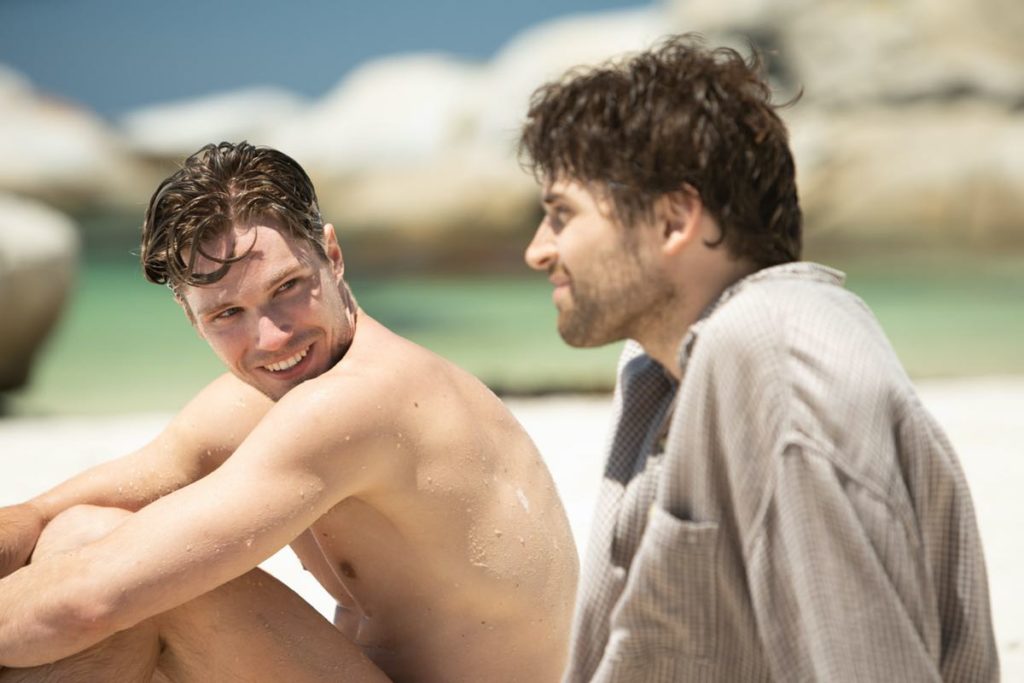
7R: For Moffie, you worked with a combination of actors and non-actors, and had a rehearsal period before the shoot. What was that like?
Oliver Hermanus: It was just a lot of fun. They were willing and young. They’d never made a movie before. Some of them were still in high school. Some of them were in university. At the time I was making Moffie, I had made three very well known films before that. So there was enthusiasm from them to work with me. I kind of had all the power. We had lots of young performers who just wanted to make a great film.
The decision to put them into boot camp, and for them to have that military experience, and for them to, suffer a little bit — the movie is a very physical film. It was very hot when we were shooting. It was very cold when we were shooting. I think the resonance of their performances is the fact that, in many moments, it’s not a performance. It’s just really happening to them, and [there] just happened to be cameras [there]. I’m very grateful that there was that level of commitment from those young men.
7R: Was the rehearsal just the boot camp? Or did you also work with them on the script and their characters?
Oliver Hermanus: For this movie, in particular, they had to learn to shoot guns. They had to go to the military boot camp, learn all the drills, how to get into formations. They had to learn about the costumes and which different costumes they wore. It was more about spending time initiating them into the army, as opposed to rehearsing scenes, which I prefer not to do, because I like it to be kind of fresh when we’re shooting it.
7R: I understand that you like to let the cameras keep running when the actors run out of dialogue.
Oliver Hermanus: How do you know that?!
7R: I watched your Q&A with Curzon.
Oliver Hermanus: I should stop telling these secrets. Otherwise, I’m gonna get caught.
7R: What do you find you get out of that? And is it any different between working with actors versus non-actors?
Oliver Hermanus: It’s kind of like the actor is running towards the edge of a cliff, and you’ve promised them that you’re going to stop the car before they reach the cliff edge, and then you just don’t say cut. So then the car goes over the cliff, and the actors are kind of in a weird freefall, because they don’t have any more lines that they know they’re supposed to say or things are supposed to do. But they know that they need to continue doing things.
It’s a way of getting them into the character. It’s a way of getting them to think and live as the character. You never know what could come out of that. For non-actors, that is actually easier because their process is less constructed.
In Moffie, it was wonderful. You could just not cut, and they would just go on and on and on and on. In these scenes where they’re supposed to be getting drunk or playing these stupid games, those were just really real moments with the cameraman between them. It was not scripted. It was just giving them the context and then letting them exist and live in it. In this movie, that convention of mine worked, I think, to great success.
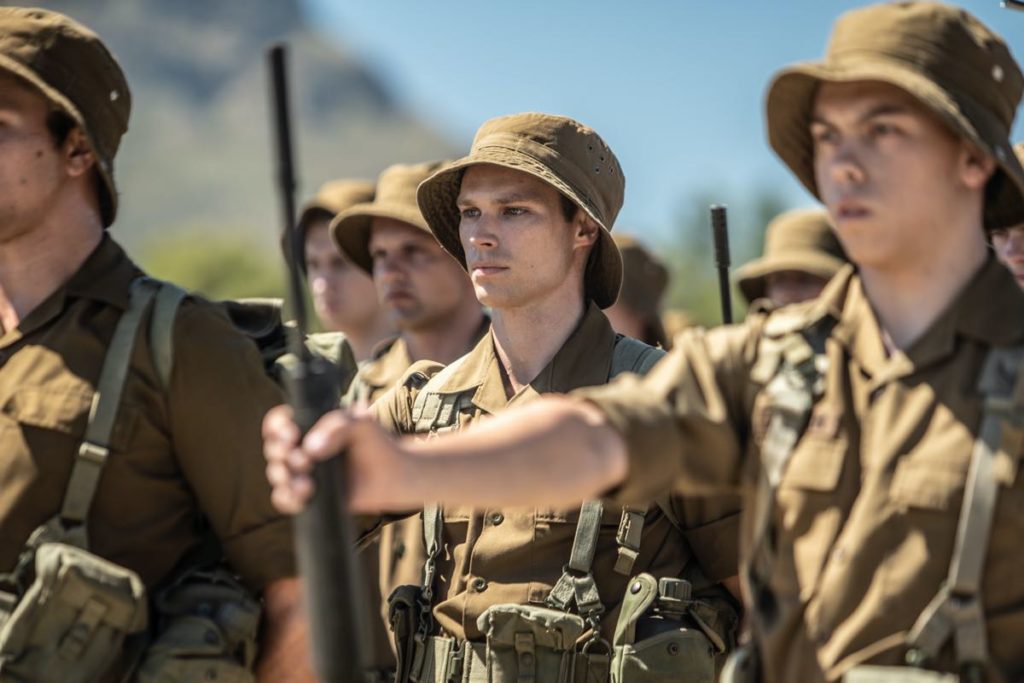
7R: The film is both Nicholas’s story and the story of the whole oppressive, patriarchal, white supremacist system. How did you think about conveying the deeply personal story of Nicholas while also giving us a sense of that machine around him?
Oliver Hermanus: It was a delicate balance in the script. I think the photography helped us in that the choice of the [almost square 4:3] aspect ratio lended itself to portraiture and closeness. It meant that we were always more physically close to Nicholas. We had to tell the story without a lot of dialogue in this film, so we were always kind of telling the story from the expressions on his face and other faces. I think that the aspect ratio unlocked that for us. If we had shot the film in cinemascope [a wide screen, rectangular aspect ratio], for example, it immediately just means that you are slightly more distant all the time.
7R: There are a lot of scenes where we see violent, bigoted behavior, but I don’t think the film ever endorses that. How do you figure out how to do that?
Oliver Hermanus: As the filmmaker and as the writer, you’ve got to have an understanding of what it is that you’re trying to communicate to the audience. What is the scene about? What is the film about? The big ask for anyone who’s not white who watches this film is having to watch a film that’s very much in the headspace of a very white supremacist group of people living in South Africa in the early ’80s.
That is a major ask. It’s a forceful provocation from myself: putting you in a headspace and a point of view where all of the Black characters in Moffie are objects and victims of humiliation and violence and suffering. It’s all about intent. I think if the intention has merit, then you kind of go with it. But you’ve got to constantly be careful, because it can get confusing sometimes.
7R: I can imagine that shooting some of those scenes can be really tough, emotionally, for you, the actors, and the crew.
Oliver Hermanus: Absolutely. It’s very strange to do scenes, particularly in South Africa, where you’re recreating a scene where you were demonstrating an act of racism that’s quite vocal and horrific. It is a sort of surreal kind of performance to generate. In some ways, it has to be real for it to work. It becomes quite a complex thing. You have to be very sensitive to the crew, particularly, because the crew is from many different racial backgrounds.
Everyone’s got to be aware of what we’re doing, that it has a function that is intended to be positive and intended to be an opening and a broadening of people’s minds. It’s a provocation and a question that the film thinks is worthy of asking. But yeah, it is never a comfortable day on set to do scenes like that.
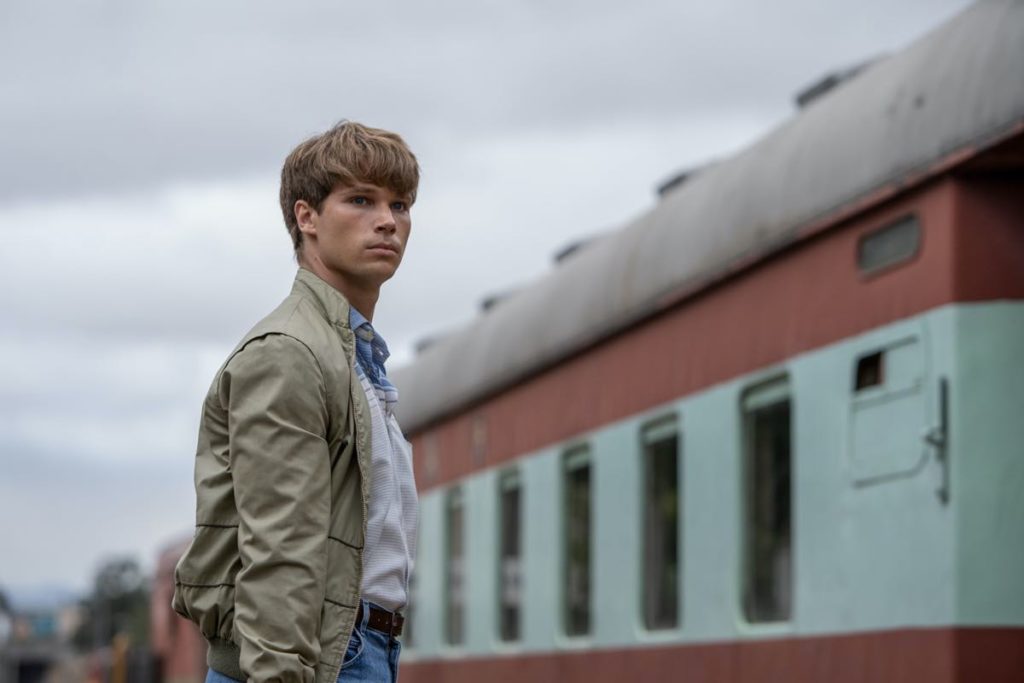
7R: How did you approach shooting that scene where the conscripted boys on the train are yelling at and harassing the Black man on the platform?
Oliver Hermanus: I kept checking in with the actor standing on the platform, Israel. I kept going and asking him how he’s doing. But I think from the moment he agreed to do the film and to play that character, he saw the value in what that moment would be in a film. I think he understood that it would be something that people would understand as this horrific act of racism. So he was committed to what the scene would become. In a way, it didn’t really enter him. He was able to keep it very much at the surface, in terms of it affecting him as a person. He saw it for what it was.
It’s also a weirdly technical scene because every time that vomit bag is thrown at him, he has to rush off and have his costume changed into a fresh suit. And then, people are frantically washing suits on the side. Sometimes, the other actor would miss, so we’d do it again. Every time that bag landed on him, and we would do another take, he had to go off and change. There was a bit of a sort of hilarity to this quick rhythm of all the suits being dried. Everyone was panicking about me shooting too fast, because they were running out of suits. So in some ways, it was also kind of funny, [even though] what it was itself is quite horrific.
7R: I know thinking about how to shoot violence in different ways is something that’s very important to you in your films. How did you think about it in Moffie?
Oliver Hermanus: It was always about making you feel unsafe, as the audience. This is how they would have felt. They would have always felt that there was this threat of suffering or violence or torture or terror around the corner, even when they’re in a training camp. In one of our scenes, suddenly, somebody takes their own life. It’s all meant to just be constantly unexpected.
I always think that, for the audience, [there is] a greater sense of violence, whether emotional or physical, if you suggest something, and then they have to fill in the blanks. I think that makes it even more horrific for people. If it’s too gratuitous, it kind of dies. Our minds are sometimes darker than what filmmakers can put on a screen.
7R: I feel like that really happens, especially with Ward 22. The way they talk about it makes it seem like it’s out of a horror movie, which it was, basically, but the fact that we don’t know what goes on there is kind of what’s scary about it.
Oliver Hermanus: I remember when I watched The Blair Witch Project, the fact that that guy just couldn’t see the whole picture, because it was just his point of view, I think that’s what made that film such a game changer and so chilling. You just didn’t know what you were afraid of. They were clearly afraid of something. You couldn’t see it, but they could. You’re just imagining that whatever it is must be pretty scary.
7R: How did you work with your cinematographer, Jamie Ramsey, to create the film’s aesthetic?
Oliver Hermanus: Lots of fighting — nah, I’m joking. Because we’ve worked together before, we have a pretty close relationship. We’re about to work together [again] now, so we’re actually at that exact same genesis period where we’re talking about a film that we’re going to shoot in a couple of weeks. It’s sharing ideas. As I’m sitting with you here now, he’s been sending me photographs today.
The script takes root in his mind. The script takes root in my mind. I [share] some creative references, and we grow it organically together. Eventually, by the time we get to shooting, we’ve kind of, hopefully, solidified an idea of an aesthetic.
With Moffie, the aspect ratio was one key idea. The [colour] grade was another, like how colour played in the sky and in their clothing. For every film that we make, we really like to challenge ourselves to do something different. In this film I’m about to start now, we are very weirdly determined to shoot lots of things from above, which might be a bad idea. But let’s see.
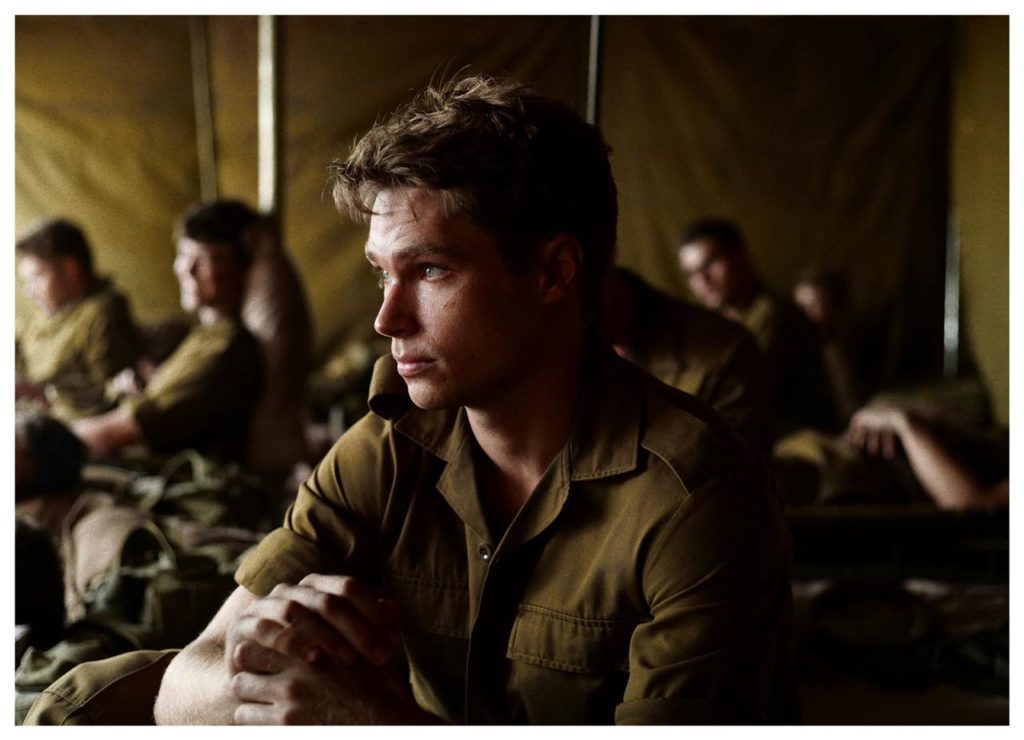
7R: So what were the big challenges for Moffie?
Oliver Hermanus: The biggest challenge for him was he physically operated the whole film. It’s like he went to the army, too. So if you see them running up a hill, you’ve got to imagine he’s running up that hill backwards. For him, it was just utterly physically grueling. He was exhausted at the end of this movie. The big challenge was my demand of shooting dozens and dozens of takes and his willingness and ability to keep shooting them for me because it’s taking a toll. The camera rig is incredibly heavy. He’s such a big part of my filmmaking process because he, in a way, commits as much to the film as I do.
7R: How did you think about shooting the land? It’s very striking in how it’s beautiful and kind of scary. I found that in The Endless River, too.
Oliver Hermanus: South Africa is a very beautiful country. The landscape is an interesting theme because, in some ways, the landscape also represents danger. In The Endless River, that was very much a thing. We have these phenomenons in South Africa of isolation being dangerous because of murders, because of these racial killings. So isolation is picturesque and attractive, but in some ways, there’s a danger and a scariness to it. And in Moffie, it was something similar. It was the sense of this beautiful setting for an incredibly brutal story.
7R: The scenes set in the showers often feel like a frightening battleground. How did you approach that?
Oliver Hermanus: The shower scenes definitely had a narrative of their own, where in the beginning, it’s fun and light. It’s playful. It has a sort of locker room feel to it. And then, the next time we go to the showers, it feels different. It almost feels like a gas chamber: there’s a sense of danger and fear and death about it. The reality of what they’re in has now moved to a scale that is scary to them.
It’s interesting because you shoot those shower scenes on the same day. So it’s quite interesting for the actors that they do this one, and then, suddenly, five minutes later, they’re doing an entirely different one. It was always a great kind of barometer for me of what the journey of our story was going to be in terms of the nature of the army taking effect on these characters. The shower scenes punctuate that for them.
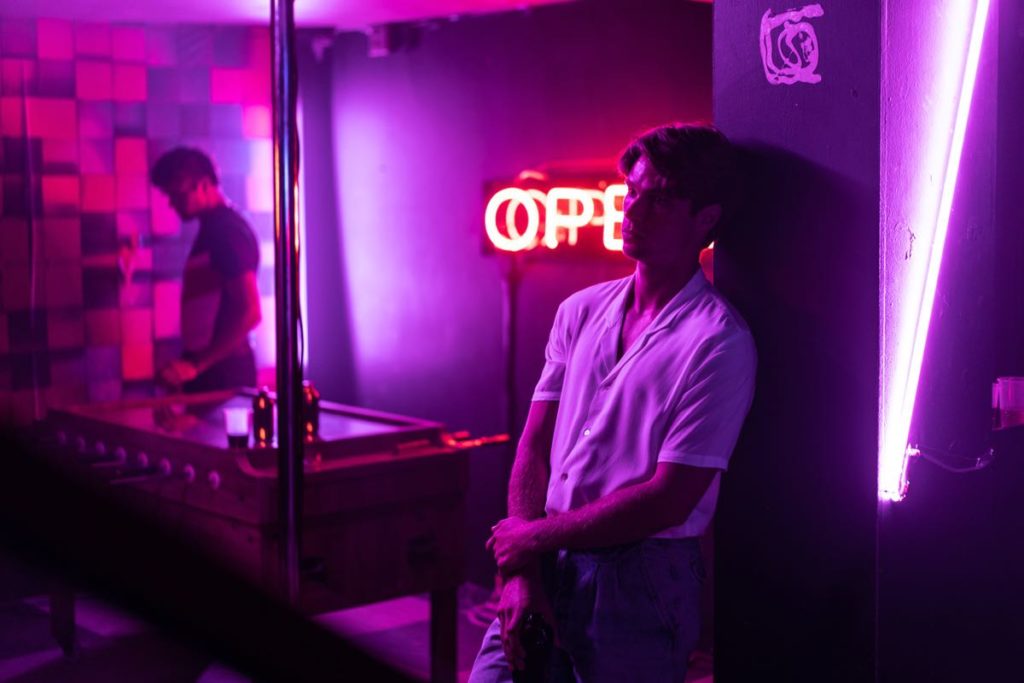
7R: Can you tell me about the sound design in the film?
Oliver Hermanus: I am obsessive about sound design. Making a film that’s set in the army is a dream for sound recorders, foley artists, and mixers, because it’s very detailed: the details of the bullets, the guns, the shots fired, and creating atmosphere through sound design.
[Moffie] is a very exterior film. There’s a lot of insects and birds and trees and grass. What was wonderful about the sound process of Moffie was we were actually probably able to create a lot more tension using sound. Because there’s the use of absolute silence or the use of wind.
I work with a sound team based in Paris. It’s always strange for them to mix my films because they have to learn about South African birds and insects and grass and wind. They’re nerds about it. They really go deep and get recordings. They become obsessive.
Sound design is a great reason why people should still go to the movies, because the experience of sound is something that only cinema can really afford us.
7R: What are you working on next?
Oliver Hermanus: I am about to do an adaptation of a Kurosawa film called Ikiru. We’re taking the original Japanese story and resetting it in London. Our script is written by Kazuo Ishiguro, and it’s very much Ishiguro’s vision: he’s a very ardent fan of Kurosawa, and I think he sees something in the original film which speaks to his aesthetic.
He makes films about subservience. The Everyman is either in a stoic British system, like The Remains of The Day, or a dystopian system, like Never Let Me Go. There’s just something about this original film that he’s had this desire to do in this Ishiguro kind of way. And I’m the lucky person that gets to direct that.

